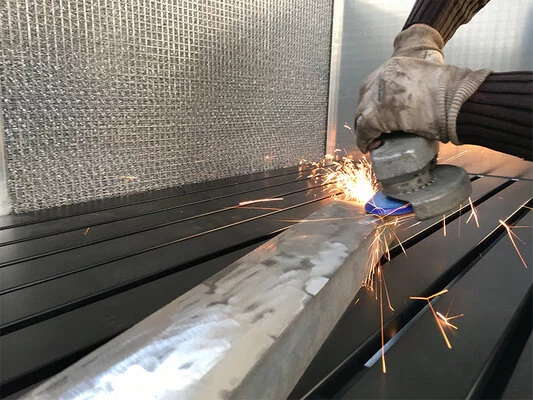
Risks and damage of metal grinding dust: Often in professional settings, the risk of grinding dust is underestimated compared to other pollutants because it generates less smoke and is therefore less 'visible' to the untrained eye. However, those who frequent machine shops are perfectly capable of 'smelling' the typical metal smell released and 'seeing' the layer of fine dust produced. In fact, grinding exposes the operator and his surroundings to inhalable and breathable dust that is potentially very hazardous to health because of its low particle size. Moreover, grinding dust dispersed in the environment can also damage delicate machinery and electronics in your production facility. Solving the problem of grinding dust: With the rightextraction and filtration systems, this risk can best be managed, and as always, the most effective is extraction directly at the source, using suction benches or mobile dust collectors when working on large parts. Vacuuming dust before it reaches the worker's breathing area prevents the worker from being exposed to it and helps prevent contamination of expensive machinery and delicate electronic equipment that may be present in the work area. Once the vacuum system has been selected, it must be remembered that it will work effectively only if:
The suction table, with a work surface length of 1 to 3 metres, is the ideal tool for safe working, as you can see from the video below, fumes and grinding dust are sucked in and the anti-rebound front protects the operator from returning sparks.
